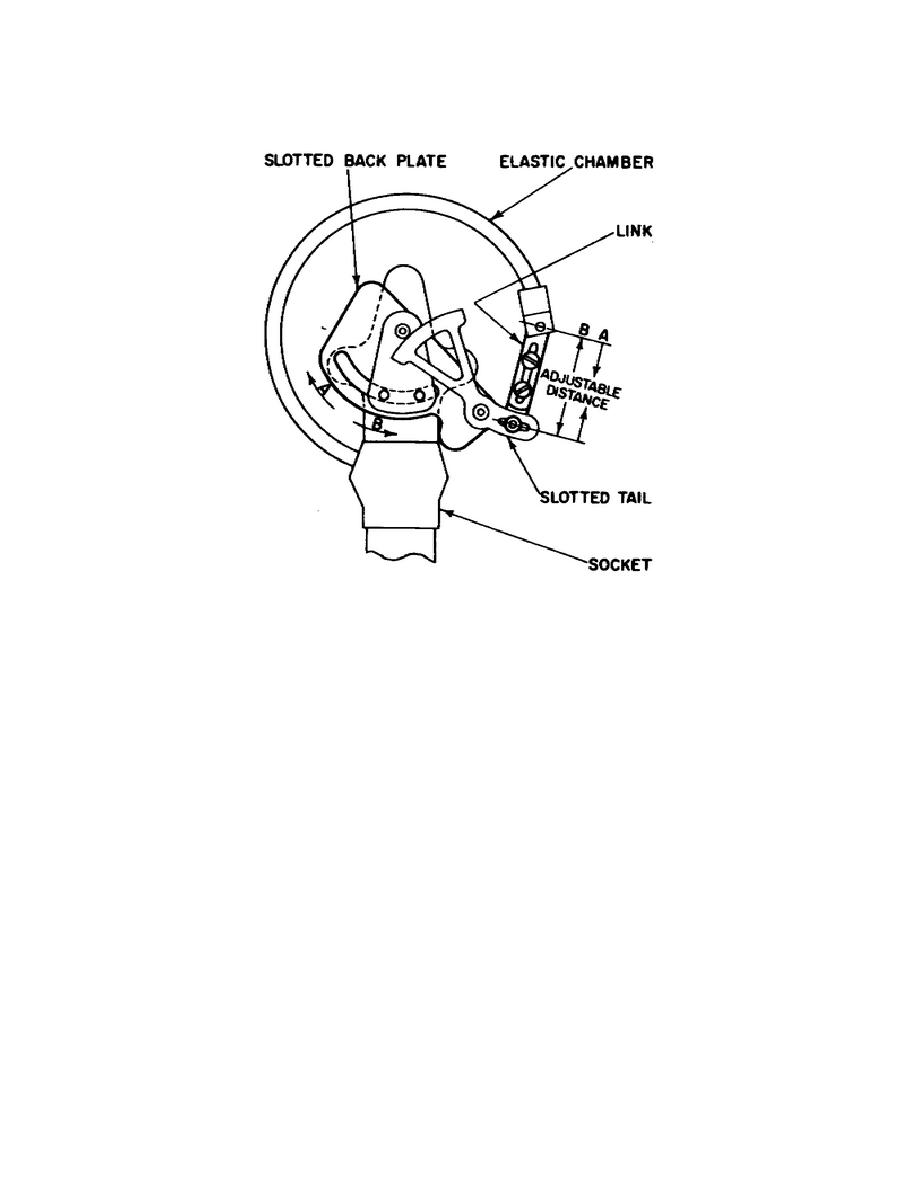
SM0486
Figure 12.
Adjustment to correct for scale shape error
c. When the errors are increasingly plus for the first 50 percent
of the scale, the complete movement should be rotated in direction "A" as shown in
Figure 12, which has the same effect as shortening the link. Should the gage read
increasingly slow for the first 50 percent of the scale, the movement should be
rotated in direction "B", which produces the effect of lengthening the link. When
the pointer travel is evenly divided on both sides of center, the proper angle
between the link and sector tail has been established to provide the desired
linearity.
The locking screws should now be properly tightened to secure this
position.
(5) Zero shift.
a. Zero shift is a linear deviation of constant value over the
entire scale range and may cause either a plus or minus indication. This condition
is usually caused by a shift of pointer position on the pinion or by a shift of the
dial position.
b. Compensation for zero shift is accomplished very simply by
repositioning the pointer; or in gages with adjustable dials, this is done by
adjusting the dial to agree with the indication of the pressure standard. You have
completed your study of pressure gages. Now you must learn how pressure principles
are applied in measurements performed with barometers.
8.
Barometers.
Since a barometer is an instrument which measures atmospheric
(barometric) pressure, we discuss the barometer capabilities (such as possessed by
the A-1 type) which permit the calibration of altimeters
61



 Previous Page
Previous Page
